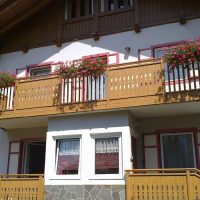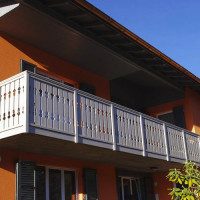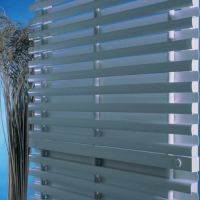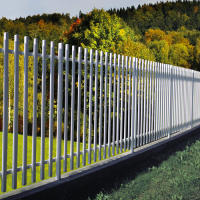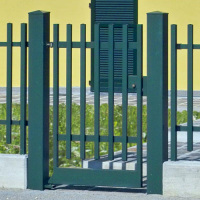
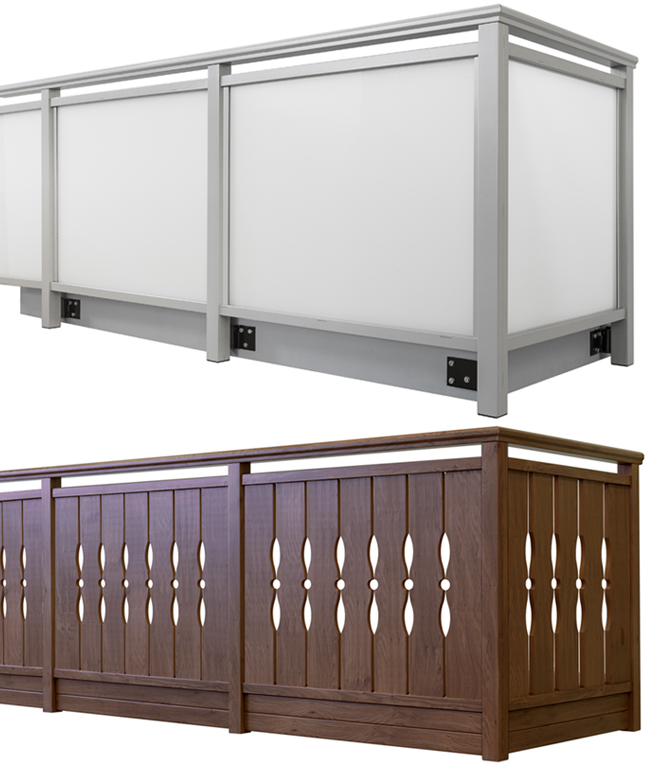
PLASTICINO S.r.l. is a prominent maker of PVC and ALUMINIUM railings and fencing. Our experience has allowed us to create and patent EKO Line® profiles offering outstanding aesthetic qualities and durability. Profiles made from extruded bars of rigid PVC, expanded PVC and an expanded PVC version with the addition of 30% Fiberglass: EKO Line PLUS®. METAL Line® extruded aluminium profiles, available painted and/or film-coated, for use with PVC structures reinforced with iron or galvanised steel profiles.
NO MAINTENANCE REQUIRED
Plasticino railing profiles require no maintenance of any kind and are highly durable, maintaining their original properties.
CERTIFIED QUALITY
Pole anchorage system CE EN1090 certified for resistance to a thrust of 200 kg/m.
view certificate
ECOLOGY
Ecology is one of the pillars of Plasticino’s industrial growth. 10% of the polyvinyl chloride we use in extrusion of our balcony profiles is “regenerated” from recycled PVC.
10-YEAR WARRANTY
Plasticino profiles are guaranteed for ten years against changes in colour and structural defects caused by atmospheric agents.
AESTHETICALLY PERFECT, UNALTERABLE – LONG-LASTING – SHOCK-RESISTANT PROFILES

Rigid PVC profile – film-coated
Expanded PVC profile – film-coated

Expanded PVC profile with the
addition of 30% Fiberglass – film-coated

Extruded aluminium profile
film-coated
Colori disponibili pellicole
 BRONZE
BRONZE
 PALE GREY
PALE GREY
 CHERRY
CHERRY
 PINE
PINE
 BLEACHED OAK
BLEACHED OAK
 DARK GREY
DARK GREY
 PLATINUM
PLATINUM
 BRUSHED ALUMINIUM
BRUSHED ALUMINIUM
 OAK
OAK
 DARK GREEN
DARK GREEN
 ANTIQUE TEAK
ANTIQUE TEAK
 MAHOGANY
MAHOGANY
 STREAKED WALNUT
STREAKED WALNUT
 CLASSIC OAK
CLASSIC OAK
The colours listed are intended merely for reference purposes.
To view the actual colour, refer to the colour samples supplied by PLASTICINO s.r.l.
THE BENEFITS OF PVC BALCONIES AND FENCING

No maintenance required

No painting required

Weather-resistant

Guaranteed for 10 years
The history of PVC
Polyvinyl chloride, commonly known as PVC, is a polymer made from vinyl chloride. It is the most important polymer in the series made from vinyl monomers, and one of the world’s most commonly used plastics.
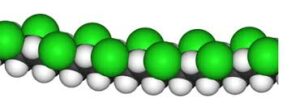 In its pure form, it is a rigid material; its versatility for different applications is a result of the possibility of blending it with plasticisers such as phthalic acid esters, even in high quantities, making it flexible and easy to form, or with inorganic compounds. It is considered stable and safe for technological applications at ambient temperature, but extremely hazardous if burnt or heated to high temperatures using unsuitable equipment due to the presence of chlorine in the molecule, which could be released in the form of Hcl, permitting dioxin formation or release of the monomer.
In its pure form, it is a rigid material; its versatility for different applications is a result of the possibility of blending it with plasticisers such as phthalic acid esters, even in high quantities, making it flexible and easy to form, or with inorganic compounds. It is considered stable and safe for technological applications at ambient temperature, but extremely hazardous if burnt or heated to high temperatures using unsuitable equipment due to the presence of chlorine in the molecule, which could be released in the form of Hcl, permitting dioxin formation or release of the monomer.
(From Wikipedia, the free encyclopedia)
The history of extrusion
Extrusion is an industrial process of deforming plastic to produce items with a constant cross section (such as tubes, bars, profiles or sheets). It is used with metals (such as steel, aluminium, lead or copper), plastics (such as rubber and thermoplastic materials) and all materials with a high degree of plasticity.

A brief history
The earliest attempts at extrusion are recorded in the late nineteenth century, but not until the end of the second world war did development of thermoplastics such as polypropylene and polyethylene make these proceedings key technologies for use working with plastic materials.
(From Wikipedia, the free encyclopedia)



